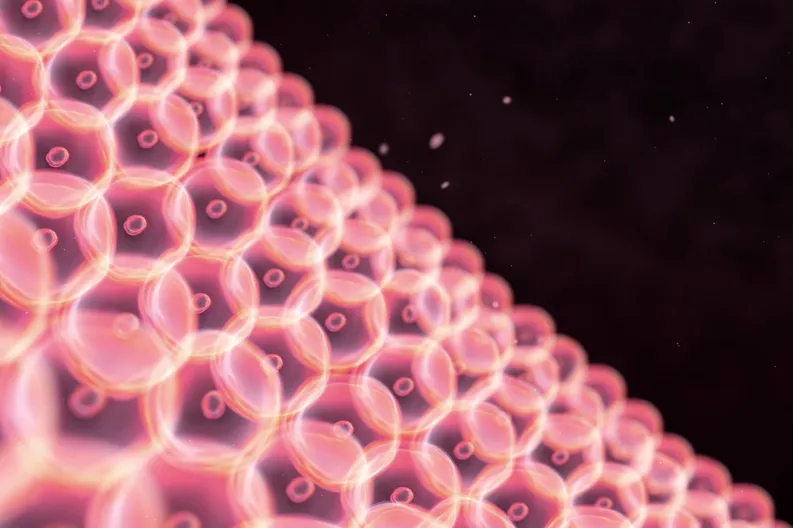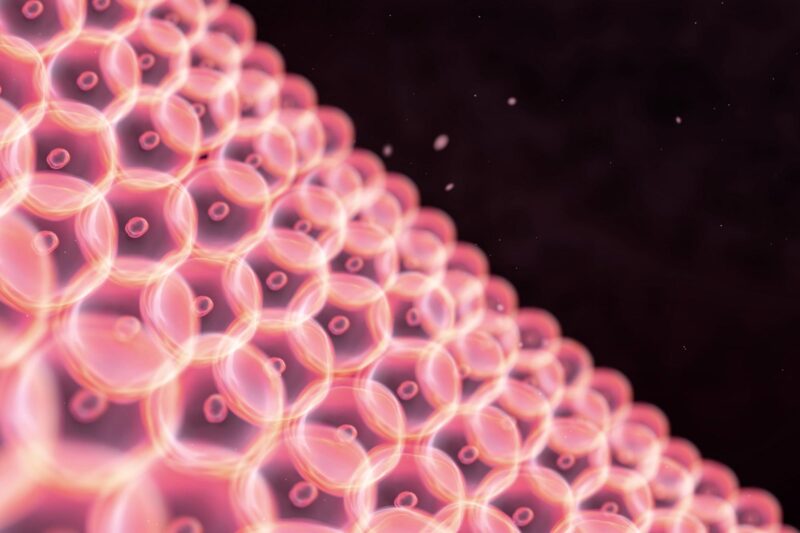
Les chercheurs ont découvert que les phospholipides sont essentiels à l’adhésion des cellules épithéliales.
Le phosphatidylinositol bisphosphate (PIP2), un phospholipide, est essentiel à l’adhésion des cellules épithéliales et au maintien de l’identité cellulaire.
Les cellules du corps des organismes multicellulaires adhèrent les unes aux autres pour former des tissus qui remplissent diverses fonctions physiologiques. Les cellules épithéliales forment notre peau et les surfaces de revêtement, comme l’intestin et les autres conduits, et protègent nos organes internes.
Cellules épithéliales sont un type de cellules qui tapissent les surfaces de votre corps. On les trouve sur la peau, les vaisseaux sanguins, les voies urinaires et les organes.
Pour maintenir l’intégrité d’un organisme et fonctionner correctement, il est important que ces cellules restent attachées les unes aux autres. Elles le font par le biais de types spécifiques de jonctions cellulaires. Ces jonctions sont caractérisées par des protéines, qui contribuent également à maintenir l’identité cellulaire.
La perte de ces protéines à la surface des cellules leur fait perdre leur identité de cellules épithéliales, ce qui entraîne leur transformation en cellules mésenchymateuses (par un processus connu sous le nom de transformation épithélio-mésenchymateuse, ou TEM) et, par la suite, leur évolution vers le cancer et la fibrose.
Ces cellules cancéreuses n’adhèrent que faiblement les unes aux autres (étant donné que les protéines qui contribuaient à maintenir l’adhésion cellulaire ont disparu), elles peuvent donc se séparer les unes des autres, migrer dans la circulation sanguine et provoquer des métastases (propagation du cancer à d’autres parties du corps).
Si le rôle des protéines dans le maintien de l’identité cellulaire est bien étudié, on ne peut s’empêcher de se demander si les lipides (molécules grasses) jouent également un rôle dans la caractérisation des cellules et la prévention de la TEM.
Sous la direction du Dr. Yoshikazu Nakamura et du Dr. Kaori Kanemaru, des scientifiques de l’Université des sciences de Tokyo (TUS), de l’Université de pharmacie et des sciences de la vie de Tokyo, de l’Université médicale et dentaire de Tokyo, de l’Université d’Akita, Hokkaido University, and Kobe University have tried to find an answer to this question.

The phospholipid PIP2 plays a critical role in maintaining the characteristics of epithelial cells. Credit: Yoshikazu Nakamura from Tokyo University of Science
“We know lipids are an important class of biomolecules, necessary for certain cellular functions. One such lipid, a phosphatidylinositol, forms a phospholipid called phosphatidylinositol bisphosphate (PIP2),” Associate Professor Dr. Nakamura from TUS dives into the topic. He tells us that PIP2 is important because it is crucial for the formation of signaling molecules that regulate cell proliferation, survival, and migration. “We had evidence that higher amounts of PIP2 were found in the epidermal layer of skin, so we hypothesized that this phospholipid contributed to the properties and characterization of epithelial cells.”
The findings from their study will be published in the journal Nature Communications today (May 9, 2022). The paper describes how the team used a battery of analytical techniques including chromatography, mass spectroscopy, immunofluorescence, retroviral expression, and real-time quantitative PCR to confirm that PIP2 plays a critical role in the determination of epithelial identity.
“We saw that epithelial cells lost their properties when PIP2 was depleted from their cell membranes. On the other hand, osteosarcoma cells (which are cancerous, non-epithelial cells) gained epithelial cell-like properties when PIP2 was produced in their plasma membranes,” says Dr. Nakamura, with a look of excitement. The group was also able to show that PIP2 regulates these epithelial properties by recruiting Par3—a protein that guides vesicles intracellularly—to the plasma membrane. Once in the plasma membrane, Par3 facilitates the formation of adherens junctions (one of the cellular junctions discussed above) which anchor neighboring cells together. This partially prevents EMT, and hence, progression of cancer.
“So,” Dr. Nakamura explains, “In theory, PIP2’s partial inhibition of EMT could halt cancer progression, making this phospholipid an attractive target molecule for anti-cancer treatment.”
TUS’ research has opened a new avenue for the development of anti-cancer drug development, possibly giving us a solution that will “stick.”
Reference: “Plasma membrane phosphatidylinositol (4,5)-bisphosphate is critical for determination of epithelial characteristics” 9 May 2022, Nature Communications.
DOI: 10.1038/s41467-022-30061-9
Funding: Takeda Science Foundation, Sumitomo Foundation, Terumo Life Science Foundation, Mochida Memorial 1 Foundation for Medical and Pharmaceutical Research, Ichiro Kanehara Foundation, Hamaguchi Foundation for the Advancement of Biochemistry



